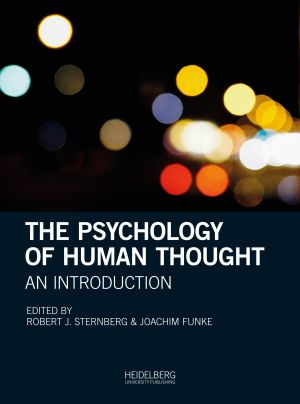How to Cite
Nolte, Julia, Garavito, David and Reyna, Valerie: Decision Making, in Sternberg, Robert J. and Funke, Joachim (Eds.): The Psychology of Human Thought: An Introduction, Heidelberg: Heidelberg University Publishing, 2019, p. 177–198. https://doi.org/10.17885/heiup.470.c6673
License (Chapter)

This work is licensed under a Creative Commons Attribution-ShareAlike 4.0 International License.
Identifiers (Book)
ISBN 978-3-947732-33-3 (PDF)
ISBN 978-3-947732-34-0 (Softcover)
ISBN 978-3-947732-35-7 (Hardcover)
Published
07/31/2019
Decision Making
- Normative, descriptive, and prescriptive models distinguish how decision makers make choices (descriptive) and how they should ideally behave (normative) to reach certain decision goals. Normative models propose that decision makers are rational, trying to optimize outcomes. In contrast, descriptive models hold that decision makers often violate assumptions of rationality. Prescriptive models make recommendations on how to achieve certain decision goals.
- According to various theories of subjectivity, decision makers decide between different choice options by subjectively evaluating objective information about choice outcomes and the probability with which these outcomes occur. Whereas expected utility theory only considers subjective evaluations of choice outcomes, subjective expected utility theory also accounts for subjective evaluations of probabilities. Prospect theory combines both of these assumptions with additional hypotheses about reference points, sensitivity to changes from that reference point, and the influence of gains versus losses.
- Dual process theories of decision making predict that decision makers evaluate choice options using one of two information-processing mechanisms: fast and impulsive “System 1” processing or slow and careful “System 2” processing. Standard dual process theories propose that decision makers default to “System 1” processing, which gives rise to various decision biases such as the framing effect or temporal discounting. Conversely, “System 2” processing is thought to increase with advanced reasoning and with maturity from childhood to adulthood.
- Fuzzy-trace theory builds on previous theories of decision making, but also is the source of predictions that falsify those theories. The theory introduces novel assumptions about mental representations of choices: surface level verbatim representations and bottom-line, gist representations. FTT further deviates from standard dual process theories by differentiating between impulsiveness, which peaks in adolescence and leads to unhealthy risk-taking, and intuition based on reliance on gist representations, which is developmentally advanced and generally encourages healthy decision making (e.g., avoidance of HIV risk). According to FTT, mature decision makers rely more strongly on simple meaning (or gist) whereas younger decision makers resort to verbatim processing of rote information. As predicted, this theory can explain an increase in certain biases (e.g., the framing effect) with age, dubbing this general phenomenon of increasing gist-based biases as developmental reversal.
- Bounded rationality assumes that decision makers are constrained in their ability to reason, especially under time pressure, when information is limited, or cognitive resources are low. Kahneman/Tversky, Gigerenzer and others have assumed that decision making exhibits cognitive economy, relying on fast-and-frugal mental shortcuts called heuristics (Nisbett & Ross, 1980). However, research since the 1990s has called these assumptions (that capacity limitations cause decision biases) into question (Reyna, 2012; Stanovich & West, 2008).
- Under cognitive, time, or information constraints, decision makers are expected to fall back on heuristics—decision rules that help us make good decisions fast but that can also lead to reasoning biases that skew judgments or lead to suboptimal decisions. Well-known examples include the representativeness, recognition, and affect heuristic. Research suggests that these heuristics are due to intuitive processes.
- When information is available, decision makers can employ thorough or frugal choice strategies to navigate the information, but that might not identify the most beneficial choice option as traditionally assumed. Satisficing and non-compensatory strategies were thought to operate under time constraints or limited cognitive resources, considering only some of the information available, but more recent research suggests that simpler gist processing is used even when people have information and time. Optimizing and compensatory strategies represent time- and resource-intensive choice strategies that consider much of the available information before allowing for a choice, but they do not necessarily yield superior choices.






